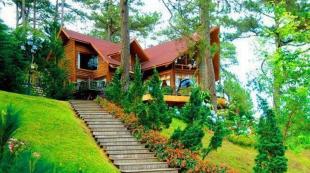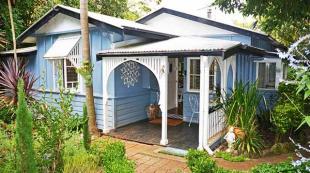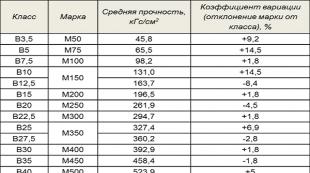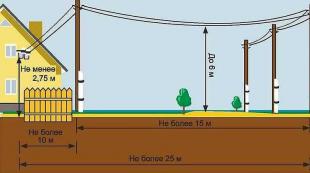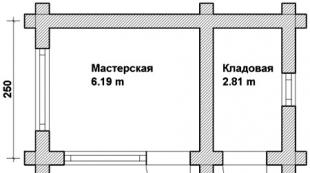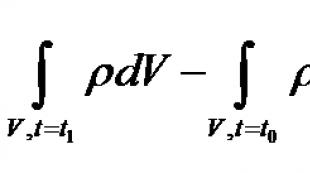Project A99401 Re-equipment of the motor ship pr. R376 ("Yaroslavets"). Yaroslavets Electrical diagram of the motor ship project RM 376
Description of the model manufacturer:
“This boat was nicknamed legendary among shipbuilders because during its existence it was not possible to create a boat that would oust it from the domestic market. These boats, built at the Sosnovsky Shipyard in the mid-50s, late 90s and at the beginning of the 21st century, could meet on all water bodies of the countries of the former Soviet Union.And back in 1997, an expedition boat of Project 376 of the Limnological Institute, built in 1950 by the Yaroslavl Shipyard, sailed on Lake Baikal. It was one of the first boats of the series.
In 1948, the SME design bureau approved a design for a towing boat for the needs of the Navy and the national economy. The project was assigned the number - 376. The project provided for the development of documentation for the construction of three modifications of the boat at once: a work boat, a customs boat and a diving boat. One of the indispensable design conditions put forward by the customer was the possibility of transporting the boat by rail.
In 1953, the lead boat of Project 376 was launched at the Yaroslavl Shipyard. It was from the name of the lead enterprise that the project received the semi-official name “Yaroslavets.” Construction was immediately launched in a large series.
The fame of this universal boat quickly spread throughout all ministries and departments, and applications for the construction of such a boat for use in the national economy began pouring in to both the USSR State Planning Committee and the Ministry of Shipbuilding Industry. Until this time, Project 376 boats were built only for the Ministry of Defense, and for its use in the national economy it was necessary to approve the project by the supervisory authorities and adjust the project to meet the requirements of these authorities. Due to the increase in demand for boats, it was necessary to increase their production, and this required expanding production. The production capacity of the Yaroslavl Shipyard did not allow this to be done, so for this purpose the construction of Project 376 boats was transferred to the Sosnovsky Shipyard. In 1955-57, an improved model of the boat was developed, designated 376u. Changes were made to the design of the boat to improve its technical and operational characteristics. A lot of effort was spent on developing manufacturability of production. The result was a very successful project for its time, which was put into mass production not only for the Navy, but also for civilian ministries and departments, as well as for supplies abroad."
The model is made of cardboard, the handrail is made of brass wire, the mast is made of tassel, the cables on the mast and handrails are monofilament thread for beading - 0.3 and 0.15 mm. Above the waterline the model is painted, below - only paper (it had to be puttied and painted immediately, but as they say: “A good thought comes later,” I began to adopt the experience of my senior comrades only after I built the hull and began to make superstructures, to change something it was late).
Before “Yaroslavets” I had never done paper modeling; a colleague asked me to take up scissors and PVA to make a gift for my boss on a business trip.
The impression from the model is twofold - this is a very labor-intensive task, modeling from paper, I puffed and puffed for more than two months, I don’t want to repeat this experience again. On the other hand, the detail of the boat is simply amazing! And how interesting it is to watch a ship grow from a stack of paper!
Thanks in advance for your criticism!
Yaroslavets- the name of a series of service and auxiliary boats.
By 1948, at the SME design bureau, a design for a multi-purpose boat for the needs of the Navy and the national economy was developed and approved. The basis was taken on the “Ya” type boat produced in the 1930-1940s. The project received the number 376 and the code “North”. In 1953, the lead boat of the project was launched at shipyard No. 345. The boats of the project received their name - “Yaroslavets” after the name of the enterprise. The second enterprise where the production of boats began was Sosnovsky Shipyard No. 640 in the Kirov region. Small series of boats were built at the plant in Russa, Novgorod region and at the Krasnoyarsk ship repair and shipbuilding plant, at the Leninskaya Kuznitsa plant and shipyards in Varna in Bulgaria.
Boat modifications
The initial project envisaged the development of three modifications of the boat: a work boat, a customs boat and a diving boat, which could be transported by rail.
Based on the project, the following modifications were developed:
- Raid boat, radiation and chemical reconnaissance boat, ambulance boat - 376;
- Travel work boat - P376; R376U; RN376U
- Modernized raid work boat (tug boat) - RM376;
- Training boat - RMU376;
- Marine hydrographic surveying boat - G376;
- Large hydrographic boat of the "GPB-511" type - G376U;
- Raid diving boat - RV376, RV376U
- Raid diving boat with a decompression chamber - RVK376;
- Passenger boat and for the needs of the National Economy - RVN376U;
- Modernized diving boat - RVM376 (03766);
- Raid diving boat - RVM376U;
- Minesweeper boat for contact and non-contact mines (road minesweeper) - T376;
- Boat minesweeper model 1957 - T376U
- Torpedo boat - L376M;
- Torpedo boat model 1962 - L376;
- Torpedo boat model 1954 - TL376;
- Finder for bottom mines and sunken torpedoes - I376, I376U;
- Artillery boat (armed raid boat) - B376;
- Large patrol boat - RV376, RV376A;
- Medium customs vessel - RVK376
- Mortar boat - M376
- PSKA for the Sea of Azov - P376 (03765)
Modernization
A further development of the project is the project 02220 multi-purpose boat “Yaroslavets-M”. The boat was designed as a multi-purpose boat - patrol, service and pleasure, for transporting various cargoes, towing small vessels, or a support boat. The comfort and habitability of the boat were improved, and an additional bathroom and shower for the crew were installed. The lead boat (serial number 061) of the modernized project was launched at Yaroslavl Shipyard OJSC on June 25, 2015. Main characteristics of the vessel
| Yaroslavets | |
|---|---|
"RK-516" (project G376) in the South Bay of Sevastopol |
|
| Project | |
| A country | |
| Years of construction | 1953 - 1992 |
| Years in service | 1953 - present V. |
| Main characteristics | |
| Length | 21 (highest) |
| Width | 3.98 m (hull) |
| Draft | Max. 1.38 (project RV376A) |
| Booking | No |
| Engines | diesel 3D6S diesel 3D6S1 |
| Power | 150 l. With. |
| Mover | 1 × VFS |
| Travel speed | 10, knots (largest: pr. RV376) |
| Cruising range | 860 miles (longest: project T376) |
| Sailing autonomy | 5 days |
| Media files on Wikimedia Commons | |
Yaroslavets- the name of a series of service and auxiliary boats.
By 1948, at the SME design bureau, a design for a multi-purpose boat for the needs of the Navy and the national economy was developed and approved. The basis was taken on the “Ya” type boat produced in the 1930-1940s. The project received the number 376 and the code “North”. In 1953, the lead boat of the project was launched at shipyard No. 345. The boats of the project received their name - “Yaroslavets” after the name of the enterprise. The second enterprise where the production of boats began was Sosnovsky Shipyard No. 640 in the Kirov region. Small series of boats were built at the plant in Russa, Novgorod region and at the Krasnoyarsk shipyard, at the Leninskaya Kuznitsa plant and shipyards in Varna in Bulgaria.
Boat modifications
The initial project envisaged the development of three modifications of the boat: a work boat, a customs boat and a diving boat, which could be transported by rail.
Based on the project, the following modifications were developed:
- Raid boat, radiation and chemical reconnaissance boat, ambulance boat - 376;
- Travel work boat - P376; R376U; RN376U
- Modernized raid work boat (tug boat) - RM376;
- Training boat - RMU376;
- Marine hydrographic surveying boat - G376;
- Large hydrographic boat of the "GPB-511" type - G376U;
- Raid diving boat - RV376, RV376U
- Raid diving boat with a decompression chamber - RVK376;
- Passenger boat and for the needs of the national economy - RVN376U;
- Modernized diving boat - RVM376 (03766);
- Raid diving boat - RVM376U;
- Minesweeper boat for contact and non-contact mines (road minesweeper) - T376;
- Boat minesweeper model 1957 - T376U
- Torpedo boat - L376M;
- Torpedo boat model 1962 - L376;
- Torpedo boat model 1954 - TL376;
- Finder for bottom mines and sunken torpedoes - I376, I376U;
- Artillery boat (armed raid boat) - B376;
- Large patrol boat - RV376, RV376A;
- Medium customs vessel - RVK376
- Mortar boat - M376
- PSKA for the Sea of Azov - P376 (03765)
Modernization
A further development of the project is the project 02220 multi-purpose boat “Yaroslavets-M”. The boat was designed as a multi-purpose boat - patrol, service and pleasure, for transporting various cargoes, towing small vessels, or a support boat. The comfort and habitability of the boat were improved, and an additional bathroom and shower for the crew were installed. The lead boat (serial number 061) of the modernized project was launched at Yaroslavl Shipyard OJSC on June 25, 2015. Main characteristics of the vessel:
- Length - 19.75 m,
- Width - 3.98 m,
- Draft (average) - 1.2 m,
- Displacement (full) - 40.0 tons,
- Passenger capacity - 12 people,
- Engine - YaMZ-238R (150 hp)
Service
Boats in various modifications were presented in all fleets of the USSR, later Russia, where they work to this day.
- Twice Red Banner Baltic Fleet: RK-17, RK-170, RK-2052, BGK-719, RK-2066, RK-2067, RK-2069.
- Red Banner Caspian Flotilla: BGK-160, RVK-887, OK-08
- Red Banner Pacific Fleet: RK-527, RK-964, RK-1153, RK-2036, RVK-2049,
- Red Banner Northern Fleet: RK-1351, RK-2047.
- Red Banner Black Sea Fleet: RK-25, RK-51, RK-516, RK-518, RK-621, RK-636, RK-708, RK-2064, RVK-156, RVK-438, RVK-617, RVK- 659, RVK-860.
After the division of the USSR Navy, boats of the Yaroslavets type continued to serve in Armenia, Belarus, Latvia (1 in the administration of the port of Riga), Lithuania (1 hydrographic boat), Ukraine, Estonia.
Project 8056.1
to the motor yacht "Yaroslavich"
Purpose.
Business, official and pleasure voyages, use as a floating office for business meetings and negotiations
Area of operation.
Inland water basins and coastal marine areas classified as “O” according to the classification of the Russian River Register
Distinctive features.
This motor ship has increased navigation safety compared to the motor ship P376 due to improved stability, and has a class of the River Register "M", allowing operation in all river basins, including reservoirs of the category "M" of the River Register.
The motor ship has greater autonomy and can be equipped with installations for treating wastewater and subsoil water, and a fuel preparation unit that reduces fuel consumption by 10-15%.
The layout of the ship and design documentation can be changed at the request of the customer.
Project A99401
Re-equipment of the motor ship pr. R376 ("Yaroslavets")
to the motor yacht "Favorite"

Purpose
Business, official and pleasure voyages, use as a floating office for business meetings and negotiations, for fishing.
Operation area
Inland water basins classified as “O” according to the classification of the Russian River Register.
Distinctive features
This motor ship has increased navigation safety compared to the motor ship P376 due to improved stability characteristics, and has a River Register class “O”, which allows operation in all river basins, including water bodies of the River Register class “M” (by additional order). The motor ship has greater autonomy, can be equipped with installations for treating wastewater and sub-sludge water, a fuel preparation unit that reduces fuel consumption by 10-15%. The layout of the motor ship and design documentation can be changed at the request of the customer.
Refurbishment concept.
Solving the issue of safe operation of motor ships pr. R376 with a superstructure of increased volume, we came to the conclusion that the stability of these ships with developed superstructures is insufficient even when operating in pools of the “L” and “R” categories when installing up to 10 tons of ballast.
Increasing the width of the vessel due to the installation of boules made it possible to significantly increase the volume of the superstructure, make it two-tiered and expand the area of operation of the converted vessels to pools of the "M-Pr" category. The result is a safe vessel with double sides that protect the main hull from damage, with good stability and unsinkability characteristics, with a duplicate aerosol fire extinguishing system in the engine room.
Additional options:
- installation of a water mist fire extinguishing system in residential premises;
- installation of armored glass in porthole windows, protecting against penetration through them in the absence of security in parking lots and winter storage;
- replacement of the main engine with YaMZ-238, NanniDiesel and others;
- installation of external and internal surveillance and security alarms;
- installation of thickened or duplicate sheets in the bow of the bottom to preserve the hull plating when moored with the bow to the shore;
- installation of bow and stern ladders for going ashore;
- installation of exhaust gas recuperators, allowing to reduce fuel consumption by 20-30%, clean the exhaust from soot and carbon dioxide, and reduce the temperature of the exhaust gas to 40-50°C;
- Installation of noise-absorbing structures
- Installation of a wastewater treatment system
- Installation of a drinking water treatment system
- Exclusive architectural view of the vessel at the customer's choice
- Exclusive paint scheme for the vessel
- Reclassification of the vessel to the "M-Pr" class
Project 376/136
Re-equipment of the motor ship pr. R376 ("Yaroslavets")
to the motor yacht "Omul"
|
Main characteristics Class RRR……………………..… +"M 2.0A" Estimated length…………………. 21.75 m Design width………………… 5.25 m Board height……………………………. 2.3 m Full displacement…………. 85.3 t Maximum draft…………………..1.6 m Engine power……….2×170 kW Travel speed……………………..22.5 km/h Passenger capacity…… 10 people Crew ………………………………. 4 people PurposeBusiness, official and pleasure voyages, use as a floating office for business meetings and negotiations. Operation areaInland water basins and coastal marine areas classified as “M” according to the classification of the Russian River Register Distinctive featuresThe motor ship has increased navigation safety compared to the motor ship P376 due to improved stability characteristics, and has a River Register class "M". |
Main characteristics
River Register class…… +"O 2.0"
Overall length…………… 23.08 m
Overall width……………. 5.3 m
Side height………………….. 2.05 m
Lightweight displacement……. 56 t
Light draft…………….. 1.26 m
SEU power………………. 150 kW
Travel speed………………… 18 km/h
Autonomy………………… 6 days
Passenger capacity……… 7 people
Crew seats…………….. 3
Main characteristics
River Register class….....+"O 2.0"
Overall length……………...….23.1 m
Overall width…………..…….5.3 m
Side height………………………..…2.05 m
Lightweight displacement………..56 t
Light draft…………...………1.26 m
SEU power……………...……….150 kW
Travel speed……………...……….18 km/h
Autonomy…………………...…..6 days
Passenger capacity......7 people
Seats for crew………….........……….3

